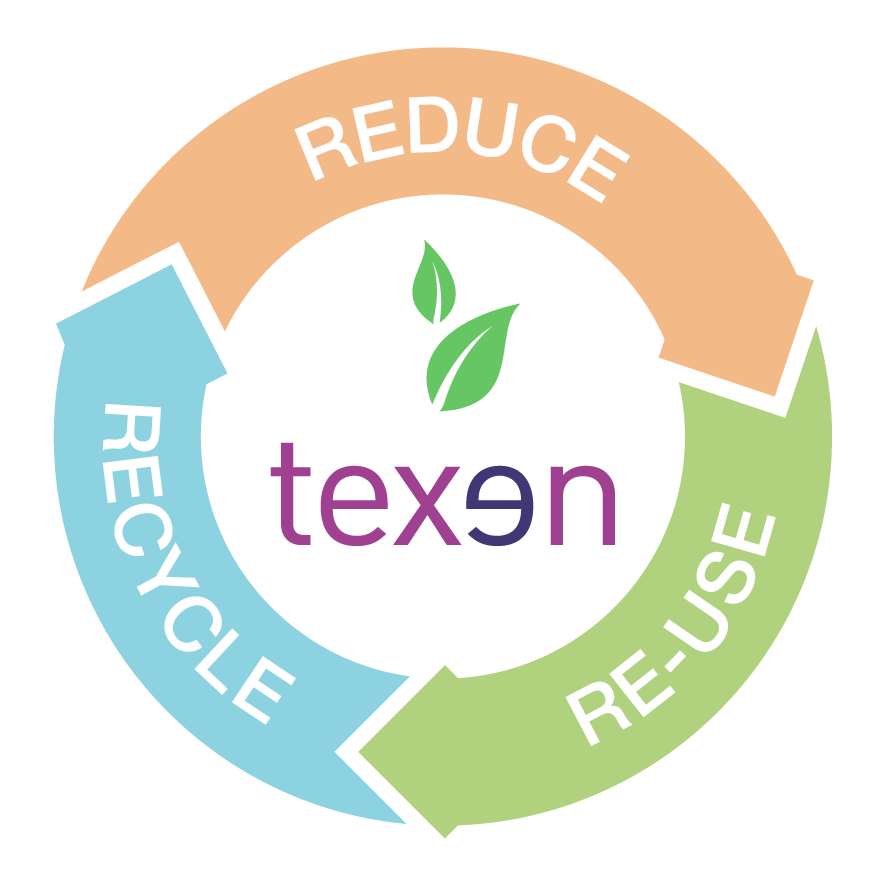Eco-design
Eco-design: a cultural conviction
Texen places eco-design at the heart of its process, using the three “Rs” (REDUCE, RE-USE, RECYCLE) as its guiding thread.
Eco-design is an overall approach that aims to reduce a product’s environmental impact throughout its life cycle. The perceived value of packaging is intrinsic to the world of luxury and inseparable from its environmental impact. Texen has implemented a three-pronged approach: Reduce, Re-use, Recycle, along with a life cycle analysis. Texen intends to systematize this strategy for all products by placing eco-design at the heart of its environmental policy.
360° Eco-design
Eco-design is a cultural mindset for Texen, permeating through the whole group. In structuring its strategy, Texen has been keen to consult its customers and identify their priority needs in relation to the 3 “Rs”: REDUCE, RE-USE, RECYCLE. Texen is using this as a basis to reflect upon all the impacts packaging products are likely to have on their environment. These broad eco-design principles also benefit from a responsible industrial model.
Texen’s materials library: a burgeoning database
In close partnership with local material suppliers, and drawing on input from the industry’s leading brands, Texen has selected, tested, and listed over 40 materials and derivatives: PCR, biosourced materials, and even compostable resins. The tests cover industrial applications and customer quality requirements. This database created using the Innovation Cell’s skills and the group’s centers of expertise, in line with a strict approval procedure, is an essential monitoring tool for brand eco-design projects and to optimize production in the renewal phase.
A cutting-edge Life Cycle Analysis tool
To support its eco-design approach, Texen has developed a life cycle analysis method adapted to the constraints of beauty packaging. This factual tool, called PULSE LCA, evaluates a product’s impact from the extraction of its raw materials to its final delivery. The study considers 6 indicators to determine the impact on resources, biodiversity, and health. This multi-criterion approach allows Texen to feed into its customers’ reflections on design, materials, and decoration, according to their CSR aims and costs. It provides brands with useful information to identify levers through which to optimize packaging as part of an overall eco-design approach. All group employees undertake to use this software for their industrial innovations and products.
Reinventing the use of packaging
At the heart of its technical and creative process, Texen focuses on the role of packaging in users’ lives. How can we extend its life duration by rethinking the way we use it? How can we be more rational in our actions and habits? How can we anticipate product recycling? All these questions feed into the company’s synergies on a daily basis. The focus on REDUCE, RE-USE, RECYCLE becomes particularly meaningful here. This is reflected in the innovative collections that have been designed over the last few years. These include 2-in-1 packs, solutions that are easy to dismantle and recycle, refillable products, and single-material packs with no excess bulk or attachments (Be Green collection). These signature products achieve a successful compromise between luxury and sustainability. This innovative strategy is based on a “test & learn” approach, driven by market inspiration, shared with customers, and emulated by the company’s steering committee.
Texen’s standards collection
At its Rose site in France, Texen has developed a standard collection to meet its brands’ regular capping demands: stoppers and caps for jars, tubes, and bottles. These are made, using injection, from recycled PP for a reduced carbon impact, and produced in a variety of diameters and heights.


